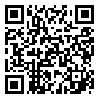1. American Psychiatric Association. Diagnostic and statistical manual of mental disorders: DSM–5. 5th ed. Washington, D.C: American Psychiatric Association; 2013.
2. Maenner MJ, Shaw KA, Baio J, Washington A, Patrick M, DiRienzo MR, et al. Prevalence of autism spectrum disorder among children aged 8 years–autism and developmental disabilities monitoring network, 11 sites, United States, 2016. MMWR Surveill Summ 2020;69(SS–4):1–12. [
DOI]
3. Antezana L, Factor RS, Condy EE, Strege MV, Scarpa A, Richey JA. Gender differences in restricted and repetitive behaviors and interests in youth with autism. Autism Res. 2019;12(2):274–83. [
DOI]
4. Grossi E, Caminada E, Goffredo M, Vescovo B, Castrignano T, Piscitelli D, et al. Patterns of restricted and repetitive behaviors in autism spectrum disorders: a cross–sectional video recording study. Preliminary Report. Brain Sciences. 2021;11(6):678. [
DOI]
5. Bishop SL, Hus V, Duncan A, Huerta M, Gotham K, Pickles A, et al. Subcategories of restricted and repetitive behaviors in children with autism spectrum disorders. J Autism Dev Disord. 2013;43(6):1287–97. [
DOI]
6. Sørlie MA, Hagen KA, Nordahl KB. Development of social skills during middle childhood: Growth trajectories and school–related predictors. International Journal of School & Educational Psychology. 2021;9(Suppl 1):S69–87. [
DOI]
7. Sperdin HF, Coito A, Kojovic N, Rihs TA, Jan RK, Franchini M, et al. Early alterations of social brain networks in young children with autism. eLife. 2018;7:e31670. [
DOI]
8. de Vaan G, Vervloed MP, Knoors H, Verhoeven L. Profiles of stereotyped behaviour in people with combined sensory impairments and intellectual disabilities. British Journal of Visual Impairment. 2020;38(2):168–83. [
DOI]
9. LeClerc S, Easley D. Pharmacological therapies for autism spectrum disorder: a review. P T. 2015;40(6):389–97.
10. Baniel A. Anat Baniel Method International (ABMI) Practitioner Training Program. Neuromovement; 2012.
11. Baniel A. The nine essentionals of ABM neuromovement: daily tools to overcome pain and increase your flexibility strength, creativity and vitality [Internet]. Neuromovement; 2018. Available from: [
Article]
12. Ferreira JP, Ghiarone T, Júnior CRC, Furtado GE, Carvalho HM, Rodrigues AM, et al. Effects of physical exercise on the stereotyped behavior of children with autism spectrum disorders. Medicina (Kaunas). 2019;55(10):685. [
DOI]
13. Hildebrandt MK, Koch SC, Fuchs T. "We dance and find each other" 1: effects of dance/movement therapy on negative symptoms in autism spectrum disorder. Behav Sci (Basel). 2016;6(4):24. [
DOI]
14. Myers RE, Winton ASW, Lancioni GE, Singh NN. Mindfulness in developmental disabilities. In: Singh NN. Psychology of meditation. New York: Nova Science; 2014. pp: 209–40.
15. Faramarzi H. Effectiveness of Anat Baniel's method for neuro–motor therapy on motor skills and social skills of children with high–functioning autism spectrum disorder. Empowering Exceptional Children. 2018;9(1):99–112. [Persian] [
DOI]
16. Gilliam JE. Gilliam autism rating scale: Examiner's manual. Pro-ed; 1995.
17. Eaves RC, Williams TO, Woods–Groves S, Fall AM. Reliability and validity of the pervasive developmental disorders rating scale and the gilliam autism rating scale. Education and Training in Developmental Disabilities. 2006;41(3):300–9.
18. Samadi SA, McConkey R. The utility of the Gilliam autism rating scale for identifying Iranian children with autism. Disabil Rehabil. 2014;36(6):452–6. [
DOI]
19. Best JF, Jones JG. Movement therapy in the treatment of autistic children. Australian Occupational Therapy Journal. 1974;21(2):72–86. [
DOI]
20. Toscano CVA, Carvalho HM, Ferreira JP. Exercise effects for children with autism spectrum disorder: metabolic health, autistic traits, and quality of life. Percept Mot Skills. 2018;125(1):126–46. [
DOI]
21. Rossignoli–Palomeque T, Perez–Hernandez E, González–Marqués J. Brain training in children and adolescents: is it scientifically valid? Front Psychol. 2018;9:565. [
DOI]
22. Doumas M, McKenna R, Murphy B. Postural control deficits in autism spectrum disorder: the role of sensory integration. J Autism Dev Disord. 2016;46(3):853–61. [
DOI]
23. Bishop JC, Pangelinan M. Motor skills intervention research of children with disabilities. Res Dev Disabil. 2018;74:14–30. [
DOI]
24. Alesi M, Bianco A, Luppina G, Palma A, Pepi A. Improving children's coordinative skills and executive functions: the effects of a football exercise program. Percept Mot Skills. 2016;122(1):27–46. [
DOI]
25. Yu JJ, Burnett AF, Sit CH. Motor skill interventions in children with developmental coordination disorder: a systematic review and meta–analysis. Arch Phys Med Rehabil. 2018;99(10):2076–99. [
DOI]
26. Begum Ali J, Charman T, Johnson MH, Jones EJH, and the BASIS/STAARS Team. Early motor differences in infants at elevated likelihood of autism spectrum disorder and/or attention deficit hyperactivity disorder. J Autism Dev Disord. 2020;50(12):4367–84. [
DOI]


 ، داوود تقوایی*2
، داوود تقوایی*2 

 ، حسین داوودی3
، حسین داوودی3 





